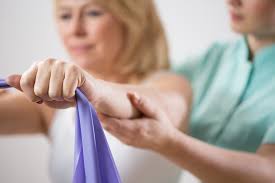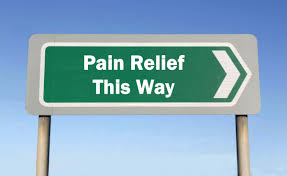What if I’m not getting better?
 Osteopathy, like all medicine, is not always an exact science. Each patient is an individual and each set of symptoms must be regarded as unique in order to be fully understood and effectively treated. Even if practised at its optimum level using all the tools available osteopathy and its methods may not immediately work for everyone, some people will not respond as expected and their symptoms may not immediately reduce. So what then? It would be easy to just say, ‘oh, what we do doesn’t work for you’, or, ‘there’s nothing that can be done’, but at Align Body Clinic we are not satisfied with that. If our people we treat are not progressing as we think they should then our thoughts begin to re-examine a person’s situation, why they are not responding and how to change that pattern. In this article we explain how we do that and some of the more common things that crop up in the rare times that results are not as expected.
Osteopathy, like all medicine, is not always an exact science. Each patient is an individual and each set of symptoms must be regarded as unique in order to be fully understood and effectively treated. Even if practised at its optimum level using all the tools available osteopathy and its methods may not immediately work for everyone, some people will not respond as expected and their symptoms may not immediately reduce. So what then? It would be easy to just say, ‘oh, what we do doesn’t work for you’, or, ‘there’s nothing that can be done’, but at Align Body Clinic we are not satisfied with that. If our people we treat are not progressing as we think they should then our thoughts begin to re-examine a person’s situation, why they are not responding and how to change that pattern. In this article we explain how we do that and some of the more common things that crop up in the rare times that results are not as expected.
%27%20fill-opacity%3D%27.5%27%3E%3Cellipse%20fill%3D%22%23777%22%20fill-opacity%3D%22.5%22%20rx%3D%221%22%20ry%3D%221%22%20transform%3D%22rotate(-165.9%20102.6%2072.4)%20scale(86.44282%2073.05257)%22%2F%3E%3Cellipse%20fill-opacity%3D%22.5%22%20rx%3D%221%22%20ry%3D%221%22%20transform%3D%22matrix(44.43371%20-2.40644%2017.45309%20322.26207%2025.5%20167.3)%22%2F%3E%3Cellipse%20fill-opacity%3D%22.5%22%20rx%3D%221%22%20ry%3D%221%22%20transform%3D%22matrix(16.86019%20-49.24458%20305.33426%20104.53928%20249.3%2030.8)%22%2F%3E%3Cellipse%20fill%3D%22%23707070%22%20fill-opacity%3D%22.5%22%20rx%3D%221%22%20ry%3D%221%22%20transform%3D%22matrix(-38.81293%20-30.98683%2029.11877%20-36.47307%20178.4%20167.1)%22%2F%3E%3C%2Fg%3E%3C%2Fsvg%3E) Is our aim slightly off?
Is our aim slightly off?
First things first, are we clear on what the goal of treatment is? In our first appointment we ask everyone what they want to achieve from the treatment we provide, for some it is very obvious (e.g. reduce pain) but with others they may have something more specific such as return to playing football or be able to drive without pain. By having a clear goal we can focus better on a patient centred outcome and use our skills to work towards what each patient will call ‘a good result’.
Have we used all the tools available to us?
If we were to boil it down, we focus on three areas to help get people out of pain and moving better;
Hands on treatment on the table
This consists of various techniques such as massage, stretching, joint articulation and manipulation and is performed in the clinic treatment room. The application of each technique is decided upon by a thorough assessment and the interpretation of specific tests. If the results aren’t as expected from treatment we usually choose to re-assess and the see if our choice of technique is correct, sometimes a change of approach is needed such as more massage like work, or maybe working on a different area of the body that may be contributing to a person’s symptoms.
Prescriptive exercise
 This is where we give each person a carefully chosen set of exercises with recommendations on how often to do them, how many times to do each, and for how long to do them. The first thing we check is if the person we are treating is actually doing them, and doing them correctly. With the best will in the world sometime people just forget to do the exercises, their schedule may make it awkward, or they may not fully understand them. Exercise prescription is vital part of our treatments so if a patient isn’t improving then this area can often be where the process is stalling, sometimes by just focusing on any barriers a person may have to completing their exercises we can greatly speed up a person’s recovery.
This is where we give each person a carefully chosen set of exercises with recommendations on how often to do them, how many times to do each, and for how long to do them. The first thing we check is if the person we are treating is actually doing them, and doing them correctly. With the best will in the world sometime people just forget to do the exercises, their schedule may make it awkward, or they may not fully understand them. Exercise prescription is vital part of our treatments so if a patient isn’t improving then this area can often be where the process is stalling, sometimes by just focusing on any barriers a person may have to completing their exercises we can greatly speed up a person’s recovery.
Ergonomic advice
Often a person’s symptoms can be generated by something habitual or an activity that may be aggravating the situation, this can things like sitting in an unsuitable position while working (a classic one is low back or neck pain from using a laptop on a coffee table all day), or having a bad driving position in the car. Often if this type of thing is having an effect on a person’s symptoms then it is revealed during our initial assessment, however it may be necessary to further examine its impact if progress is slow. Sometimes we ask people to send us a photo of their workstation or their chair, we have even been known to visit a person’s workplace to see if we can improve their working environment! Other factors that can adjusted are the how long or how often a person is performing the activity that aggravates their symptoms, by changing these until symptoms reduce we can often speed up a person’s recovery.
Sometimes it’s just us…..
As mentioned at the start of this article osteopathy is not an exact science, there are many varied styles of treatment and models of approach to follow. Sometimes one practitioner’s viewpoint or ‘style’ of practice doesn’t seem to fit the needs of the person in front of them. It can be argued that the information gained from an assessment can be interpreted differently by different practitioners (inter-rater reliability) meaning that one person’s opinion is not the only one worth having.
 If as practitioners we feel that we are not quite on the mark with understanding a person’s symptoms or that haven’t got a clear grip on the best way forward we recommend having them assessed by another osteopath. Luckily at our clinic Sheena and Jay both have well-formed but sometimes differing views on how best to treat different types of people. If a person we are treating isn’t progressing as expected we will often get the other to review the situation and see if we identify why that may be and then construct a better plan for that person, sometimes this will involve (with the person’s agreement) switching from being treated by one to the other.
If as practitioners we feel that we are not quite on the mark with understanding a person’s symptoms or that haven’t got a clear grip on the best way forward we recommend having them assessed by another osteopath. Luckily at our clinic Sheena and Jay both have well-formed but sometimes differing views on how best to treat different types of people. If a person we are treating isn’t progressing as expected we will often get the other to review the situation and see if we identify why that may be and then construct a better plan for that person, sometimes this will involve (with the person’s agreement) switching from being treated by one to the other.
Maybe further investigation is needed, the case for x-rays and MRIs
 One of the more common things we get asked and we must consider if a person’s symptoms are not abating s should we refer them for further investigation, such as an x-ray or an MRI? Many people feel that getting an image may be helpful but this is not always the case.
One of the more common things we get asked and we must consider if a person’s symptoms are not abating s should we refer them for further investigation, such as an x-ray or an MRI? Many people feel that getting an image may be helpful but this is not always the case.
To start with there are strict criteria laid down on the justification for subjecting people to these investigations, this is to ensure (especially in the case of x-rays) that a person is not being exposed to radiation unless it is likely that there is a net benefit from that exposure. This would usually mean that it would reveal an underlying problem or it would significantly change a person’s treatment. Even if this is the case the information gained from the image is not always descriptive of a person’s symptoms, for example research shows that many people with positive findings on MRI often have no symptoms with the converse also being true. So even though we regularly refer people for MRIs and x-rays we may also attempt to dissuade people from focusing on them as an option due to the risk of exposure to radiation and the possibility of the results not changing their care.
By constantly reassessing and questioning our results compared to a person’s goals from treatment we strive to ensure that our patients achieve their goals and continue to lead a full and pain free life!
Do you want to know what is causing your pain and if we can help? Why not take advantage of our new patient assessment introductory offer to get you started towards a tailor made recovery plan for only £19.
Are you in a lot of pain and want to get better as soon as possible? If so then why not book in for a new patient consultation, with treatment on the day, for £75.
We are also there to help you from home. Take a look at our suite of exercise resources and advice sheets which you can easily download and use from home.

 Is our aim slightly off?
Is our aim slightly off?